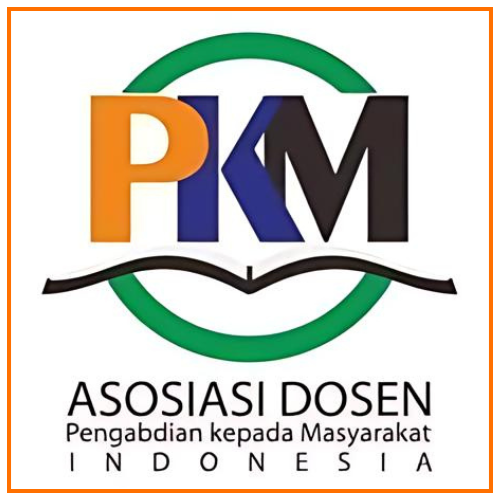Fostering Translating Skills to Young Learners: A Case Study
Abstract
Keywords: Translating; Young Learner; and Skills.
Full Text:
PDFReferences
Adawiyah, R. (2022). Motivational Strategies Applied by the English Tutors to Teach Young Learners. Tamaddun, 21(1). https://doi.org/10.33096/ tamaddun.v21i1.104.
Al Salem, M. N., Alghazo, S., Alrashdan, I., Abusalim, N., & Rayyan, M. (2023). On English translation variation of similar plural nouns in the Holy Quran. Cogent Arts and Humanities, 10(1). https://doi.org/10.1080/23311983.2023.2196136.
AlEnezi, D. R., & Alkhaleefah, T. A. (2023). Investigating Saudi Student Translators’ Difficulties and Strategies in Translating English Culture-bound and Idiomatic Expressions: A Quantitative Study. English Language Teaching, 16(2). https://doi.org/10.5539/elt.v16n2p98.
Anggarini, I. F. (2022). Insertion the Values of Religious Moderation on Indonesian EFL Class. Journal of English Language Teaching and Learning (JETLE), 4(1). https://doi.org/10.18860/jetle.v4i1.17744.
Anggarini, I. F., Azzahwa, A. C. A. Z., Setyawan, C. A. D., A’la, M. T. R., Maghfiroh, A. L., & Putri, R. H. E. (2022). Integrative Learning in Islamic Indonesian EFL Classroom: Challenges and Opportunities. Journal of English Teaching and Learning Issues, 5(2). https://doi.org/10.21043/jetli.v5i2.17091.
Anggarini, I. F., Nugraha, S. A., Hamdani, M. S., Kirana, A. S. C., Fakhrunisa’, M., & Anjayani, I. N. (2023). Storytelling as a media in speaking English for Indonesian EFL learners: A speech competition study. Journal of Research on English and Language Learning (J-REaLL), 4(1). https://doi.org/10.33474/j-reall.v4i1.19156.
Apriani, E., Santiana, S., & Harmi, H. (2022). Investigating the Role of ICT toward Students’ Higher Order Thinking in Writing Skills at Islamic University Students. AL-ISHLAH: Jurnal Pendidikan, 14(2). https://doi.org/10.35445 /alishlah.v14i2.2260.
Apriyanti, T., Wulandari, H., Safitri, M., & Dewi, N. (2017). Translating Theory of English into Indonesian and Vice-Versa. Indonesian Journal of English Language Studies (IJELS), 2(1). https://doi.org/10.24071/ijels.v2i1.350.
Arono, A., & Nadrah, N. (2019). Students’ Difficulties in Translating English Text. JOALL (Journal of Applied Linguistics & Literature), 4(1). https://doi.org/10.33369/joall.v4i1.7384.
Aspers, P., & Corte, U. (2019). What is Qualitative in Qualitative Research. Qualitative Sociology, 42(2). https://doi.org/10.1007/s11133-019-9413-7.
C. Bogdan Sari Knopp Biklen, R. (2006). Qualitative Research for Education: An Introduction to Theories and Methods, Fifth Edition 5th Edition. Qualitative Research for Education.
Camó, A. C., & Ballester, E. P. (2015). The effects of using L1 translation on young learners’ foreign language vocabulary learning. Elia, 15. https://doi.org/10.12795/elia.2015.i15.06.
Chu, PH. and Chang, YY. (2017). John W, Creswell, Research Design: Qualitative, Quantitative, and Mixed Methods Approaches. Journal of Social and Administrative Sciences, 4(June).
Creswell, J. W. (2020). Penelitian Kualitatif & Desain Riset : Memilih di Antara Lima Pendekatan. In Mycological Research.
Dikec, D., & Sarac, S. (2016). Valuating The Efficiency of NLP Applications Via Adapting Songs To Teach English Vocabulary to Young Learners. ICERI2016 Proceedings, 1. https://doi.org/10.21125/iceri.2016.2294.
Fatimah, A. S., & Santiana, S. (2017). Teaching in 21St Century: Students-Teachers’ Perceptions of Technology Use in the Classroom. Script Journal: Journal of Linguistic and English Teaching, 2(2), 125. https://doi.org/10.24903/sj.v2i2.132.
Fatimah, A. S., Santiana, S., & Saputra, Y. (2019). Digital Comic: an Innovation of Using Toondoo as Media Technology for Teaching English Short Story. English Review: Journal of English Education, 7(2). https://doi.org/10.25134/ erjee.v7i2.1526.
Fransischa, A., & Syafei, A. F. (2016). Using Song to Teach English to Young Learners. Journal of English Language Teaching, 5(1).
Fransiska, A. W., & Arifin, A. (2021). Analysis of Translation Techniques on the English Teachers’ Translation of English Articles. Salience Journal, 1(1).
Goriot, C., van Hout, R., Broersma, M., Lobo, V., McQueen, J. M., & Unsworth, S. (2021). Using the peabody picture vocabulary test in L2 children and adolescents: effects of L1. International Journal of Bilingual Education and Bilingualism, 24(4). https://doi.org/10.1080/13670050.2018.1494131.
Gu, S., & Li, X. (2022). Optimization of computer-aided english translation teaching based on network teaching platform. Computer-Aided Design and Applications, 19(S1). https://doi.org/10.14733/CADAPS.2022.S1.151-160.
Hardiyanti, R. L. P., & Herda, R. K. (2023). Teaching Vocabulary Using Flash Cards in Indonesian ESP Classroom: A One-Shot Case Study. JELITA: Journal of Education, Language Innovation, and Applied Linguistics, 2(1). https://doi.org/10.37058/jelita.v2i1.6466.
Hutahaean, R. I., Saragih, R. A., Gea, E. C. Y., & Lubis, H. T. (2023). An Analysis on English Students’ Ability in Translating from English Into Indonesian. Journal on Education, 5(4). https://doi.org/10.31004/joe.v5i4.2496.
Imawanti, Z., Prastiyowati, S., Sumarsono, P., & Farah, R. R. (2020). Male students perception toward english for young learner course at English language education department. International Journal of Scientific and Technology Research, 9(3).
M. Al Tameemi, I., & A. Farhan, M. (2020). Phonological Problems of Translating English Advertisements into Arabic. Arab World English Journal For Translation and Literary Studies, 4(1). https://doi.org/10.24093/awejtls/vol4no1.5.
Morgan, H. (2022). Conducting a Qualitative Document Analysis. Qualitative Report, 27(1). https://doi.org/10.46743/2160-3715/2022.5044.
Neithanantan, P., & Hua, T. K. (2023). Song As a Vocabulary Booster for Young Learners. International Journal of Academic Research in Progressive Education and Development, 12(2). https://doi.org/10.6007/ijarped/v12-i2/17496.
Nguyen, X. M. (2021). Strategies for Translating English Passive Sentences into Vietnamese. International Journal of TESOL & Education, 2(1). https://doi.org/10.54855/ijte22216.
Nugraha, I. (2013). Indonesian young adults’ interference in translating English cursing. International Journal of Applied Linguistics and English Literature, 2(5). https://doi.org/10.7575/aiac.ijalel.v.2n.5p.167.
Nur Najibah Koman, H., Hartono, R., & Yuliasri, I. (2019). English Education Journal Translation Errors in Students’ Indonesian-English Translation Practice. English Education Journal, 9(2).
Nurlaila, N., & Irlina, A. (2021). English Education Department Students’ Difficulties in Translating English News Report. PANYONARA: Journal of English Education, 3(2). https://doi.org/10.19105/panyonara.v3i2.5089.
Octaberlina, L. R., & Anggarini, I. F. (2020). Teaching Vocabulary Through Picture Cards in Islamic Elementary School A Case Study in Nida Suksa School, Thailand. Madrasah: Jurnal Pendidikan dan Pembelajaran Dasar, 13(1). https://doi.org/10.18860/mad.v13i1.9649.
Octaberlina, L. R., & Rofiki, I. (2021). Using Online Game for Indonesian EFL Learners to Enrich Vocabulary. International Journal of Interactive Mobile Technologies, 15(1). https://doi.org/10.3991/IJIM.V15I01.17513.
Phan, T. M. U., Nguyen, T. T. H., & Nguyen, H. L. (2022). Some Common Errors in Vietnamese-English Translation of English-Major Juniors at Tay Do University, Vietnam. European Journal of English Language Teaching, 7(2). https://doi.org/10.46827/ejel.v7i2.4226.
Putri, A. W. K., & Rustipa, K. (2023). Using Songs to Teach English Vocabulary to Young Learners in Kindergarten. Edunesia: Jurnal Ilmiah Pendidikan, 4(3). https://doi.org/10.51276/edu.v4i3.485.
Rademaker, L. L. (2011). Qualitative research from start to finish: A book review. In Qualitative Report (Vol. 16, Issue 5). https://doi.org/10.46743/2160-3715/2011.1309.
Rahayu, A. R. (2021). Students’ Perceptions of Google Translate as a Media for Translating English Material. [Thesis, Muhammadiyah University of Makassar], 4(1).
Rahmadan, M. K., Abrar, M. A., Failasofah, F., & Masbirorotni, M. (2023). Investigating EFL Kindergarten Teachers’ Media and Challenges in Teaching Vocabulary. JELITA: Journal of Education, Language Innovation, and Applied Linguistics, 2(1). https://doi.org/10.37058/jelita.v2i1.5229.
Robinson, J. P. (2010). The effects of test translation on young English learners’ mathematics performance. Educational Researcher, 39(8). https://doi.org/10.3102/0013189X10389811.
Rohim, A., & Putra, A. S. (2022). Identification Of Student’s Lexical Error in Translating English Text Into Indonesian. Globish: An English-Indonesian Journal for English, Education, and Culture, 11(1). https://doi.org/10.31000/globish.v11i1.5511.
Santiana, S., Faisal, R. F., & Sri, M. (2023). An Insight into Blog Use in EFL Reading Class. International Journal of Educational Best Practices, 7(1). https://doi.org/10.31258/ijebp.v7n1.p132-150.
Santiana, Santiana;, Silvani, D., & Ruslan. (2021). Optimizing LMS CANVAS for Interactive Online Learning Perceived by the Students. Journal of English Education and Teaching (JEET), 5(4), 529–543.
Santiana, Santiana. (2021). Yang Terdepan Dalam Menghadapi Pembelajaran Daring. https://files.osf.io/v1/resources/8z5cd/providers/osfstorage/60d590b2e779a500e2a0c145?format=pdf&action=download&direct&version=1.
Santiana, S., Surya Lesmana, D., Arini; N. H., Muthmainnah, M., Galal, M., & Marzuki, A. G. (2021). Anitales : A Modern Application Used Perceived by the Students in Digital Story Telling Class. International Journal of Social Science & Management Studies, 7(5).
Sari, E. P. (2018). The Use of Games as A Strategy to Teach English to Young Learners. In SANATA DHARMA UNIVERSITY (Vol. 66).
Setyaningrum, R. W., Purwati, O., & Sabgini, K. N. W. (2022). Exploring pre-service teachers of English for young learners experience: Innovations during their teaching practicum. JEES (Journal of English Educators Society), 7(1). https://doi.org/10.21070/jees.v7i1.1645.
Simanjuntak, H. L. (2019). The Translation of English Passive Voice into Indonesian. TEKNOSASTIK, 17(1). https://doi.org/10.33365/ts.v17i1.231.
Suseno, E., & Purwati, O. (2020). Enhancing Speaking Proficiency by Adapting Grammar- Translation Method And Electronic Dictionary For Young Learners. IJET (Indonesian Journal of English Teaching), 9(1). https://doi.org/ 10.15642/ijet2.2020.9.1.44-66.
Trota, M. P. B., Cabeltis, C. B., Cadiente, N. T., Ligan, M., Asoy, N. M. C., & Bardaje, Z. L. (2022). The Influence of Watching English Cartoons on English Language Acquisition: A Case of Selected Filipino Preschoolers. JELITA: Journal of Education, Language Innovation, and Applied Linguistics, 1(2). https://doi.org/10.37058/jelita.v1i2.5249.
Widyastuti, R., Putri, G., & Saraswati, D. (2022). Teachers’ Perceptions on The Implementation of Pop Songs and Its Challenges to Teach Pronunciation For Young Learners. JELLT (Journal of English Language and Literature Teaching), 7(2).
Wongranu, P. (2017). Errors in translation made by English major students: A study on types and causes. Kasetsart Journal of Social Sciences, 38(2). https://doi.org/10.1016/j.kjss.2016.11.003.
Yang, Y. (2018). An English translation teaching model based on interactive reading theory. International Journal of Emerging Technologies in Learning, 13(8). https://doi.org/10.3991/ijet.v13i08.9047.
DOI: https://doi.org/10.37058/jelita.v3i1.9624
Refbacks
- There are currently no refbacks.








Journal of Education, Language Innovation, and Applied Linguistics
Lembaga Penelitian, Pengabdian Kepada Masyarakat dan Penjaminan Mutu Pendidikan (LP2M-PMP) Universitas Siliwangi
Jalan Siliwangi Number 24, Kota Tasikmalaya - 46115
West Java, Indonesia










